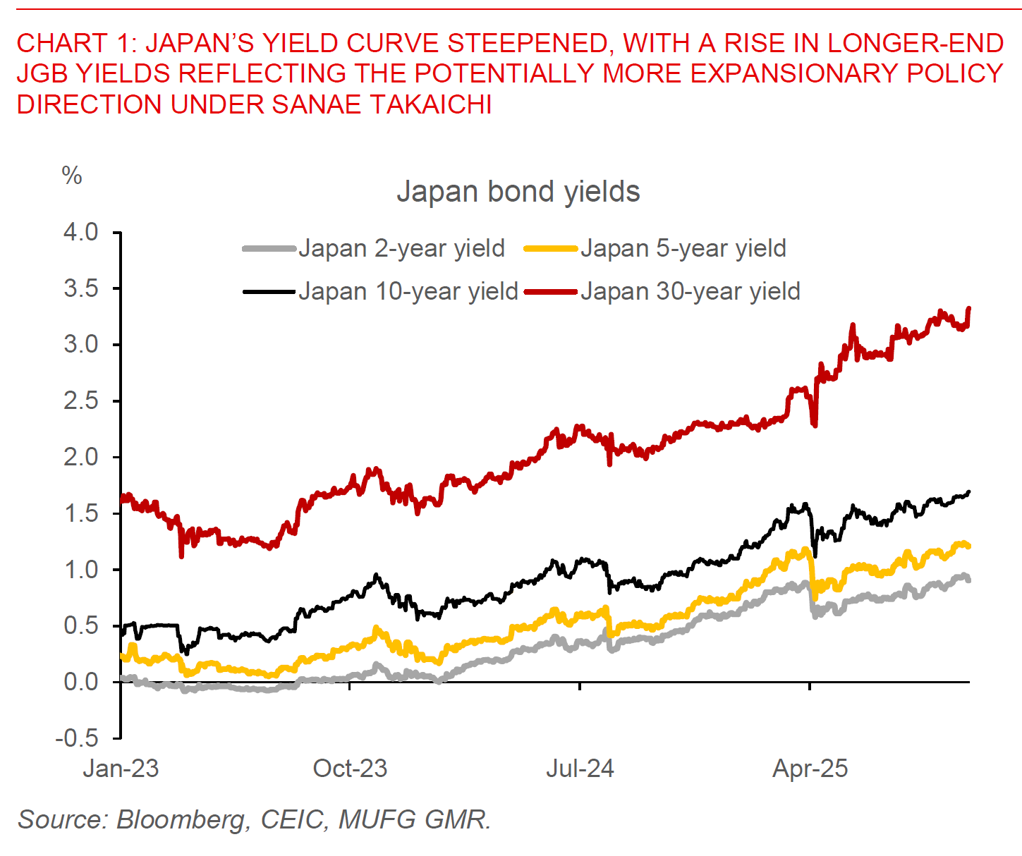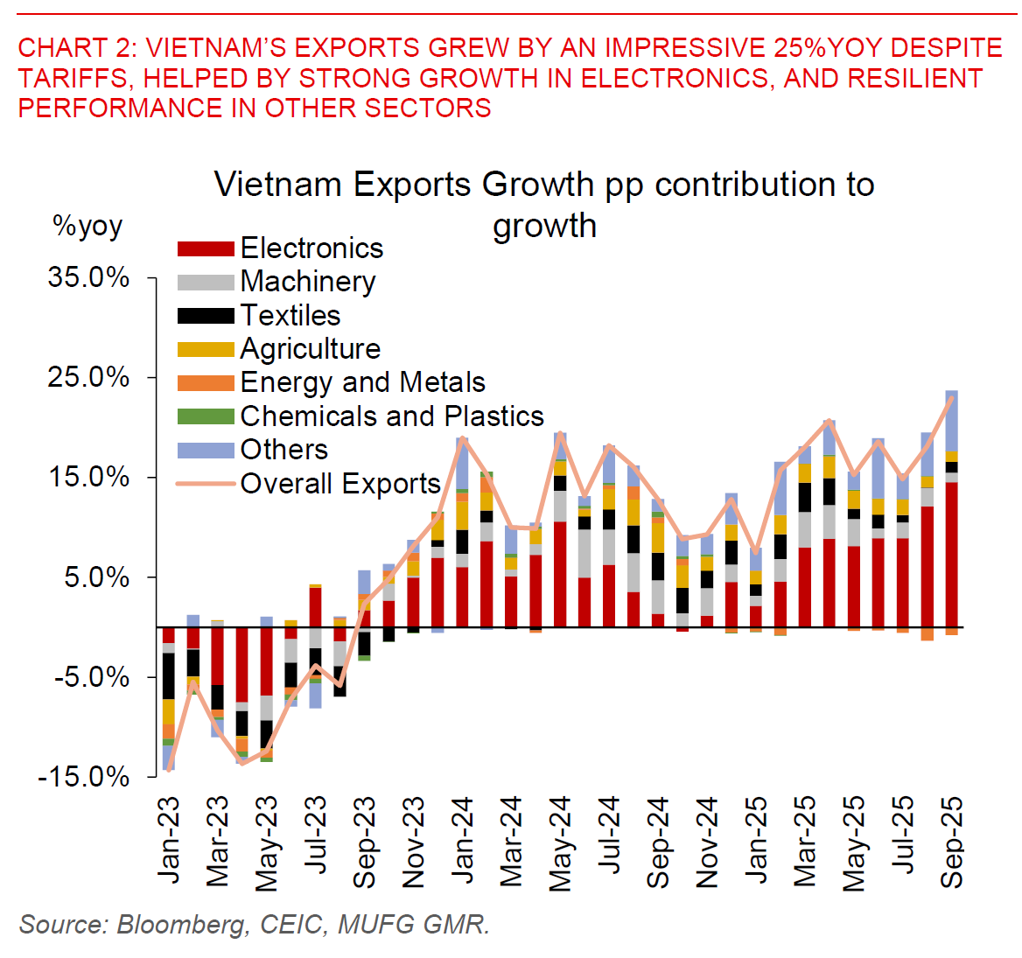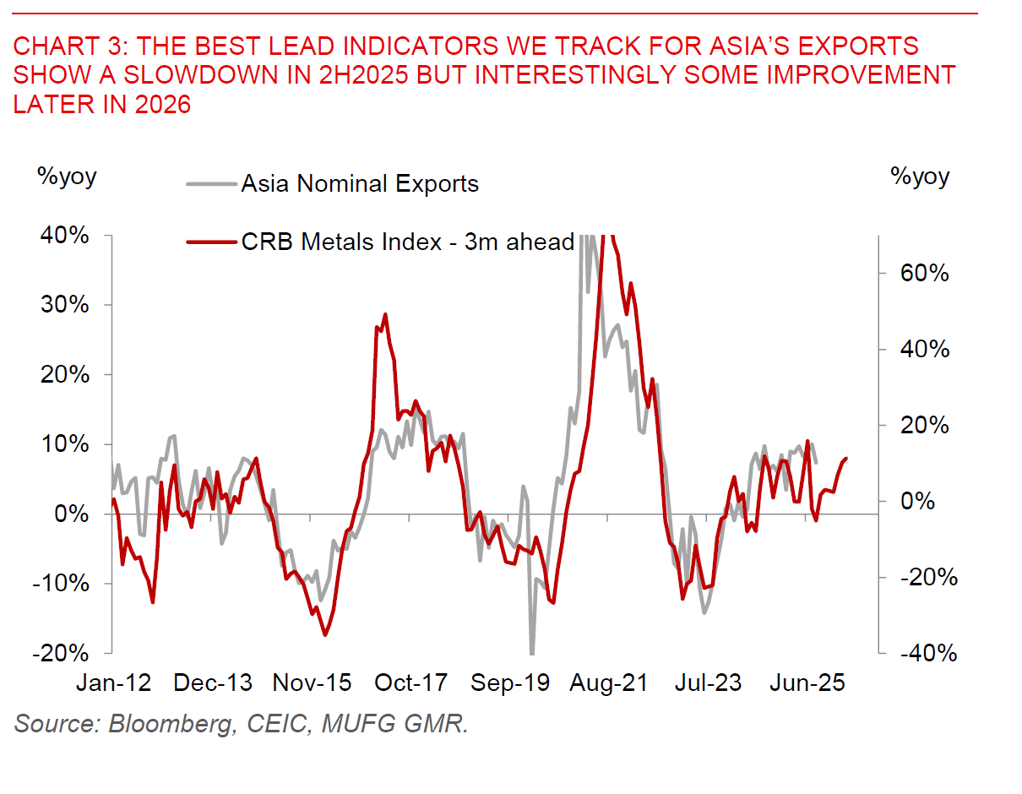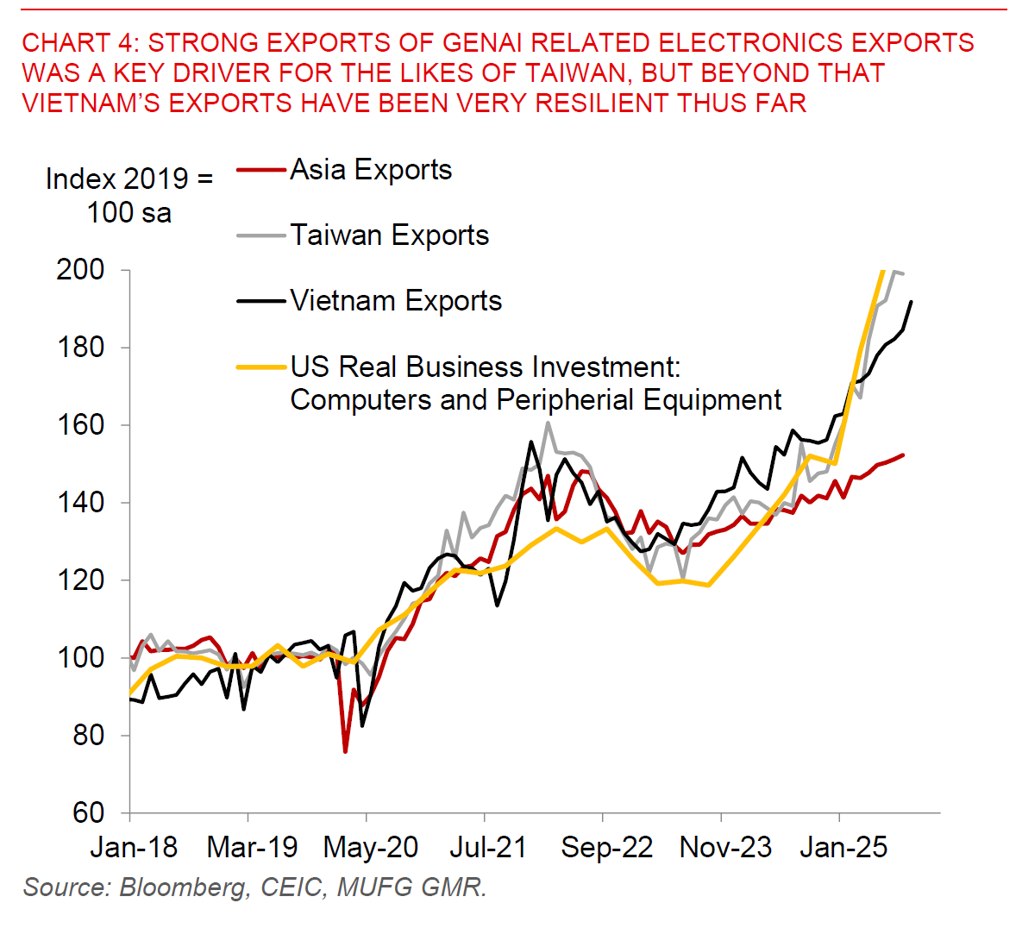Ahead Today
G3: Germany Factory orders
Asia: Philippines CPI
Market Highlights
Political risks remained front and center of markets this week, first in Japan and more recently in France. The impact of the Japan’s LDP Elections with Sanae Takaichi likely the next Prime Minister continued to play out in markets, with the Japanese Yen weakening above the 150 level, the Nikkei surging more than 4%, and the JGB curve steepening with longer-end yields rising around 15bps. The policy direction by Takaichi-san seems to be for at least some modest fiscal expansion with proposals to cut gasoline taxes, and to also delay (albeit not deny) Bank of Japan rate hikes. Close economic advisors such as Etsuro Honda and Takuji Aida were quoted as saying that Takaichi-san would probably tolerate another rate hike either December or January, with unclear paths beyond that. Meanwhile, JPY received some temporary reprieve when local media reported that she may give key posts to veteran former finance Ministers, and potentially signalling that she will not ignore fiscal concerns. While only time will tell, in the very near-term the bias for steeper JGB curves, expectations of reflationary policies benefiting Japanese equities, and underperformance in the Japanese Yen may continue.

Meanwhile in France, Prime Minister Sebastien Lecornu resigned less than a month after his appointment, resulting in the OAT-Bund spread widening and EUR/USD selling off below the 1.1700 level before recovering in Asia time. President Macron gave the outgoing Prime Minister Lecornu 48 hours to negotiate with France’s political parties, but it’s unclear whether that would result in meaningfully better outcomes. If that fails, the options from here include appointing another Prime Minister, calling for another parliamentary elections, and calling for a Presidential elections (not due till 2027), all of which are imperfect and may continue to result in somewhat elevated political uncertainty in France moving forward.
Last but not least, Vietnam released its export and trade indicators for September, providing one of the first read across Asia for export activity and the impact from tariffs. The numbers were impressive, with a 25%yoy rise in exports, and driven by more than 30% rise in trade and exports to the US. Of course, once again the full impact of tariffs may not have been felt yet, with some goods on water likely still exempt from tariffs at least till October, while some key products such as electronics still receiving exemptions for now. The data suggests as such, with a 66%yoy surge in electronic exports, but outside of that the export numbers were probably more resilient than a 20% tariff would suggest, with a 47%yoy rise in textile fibres, 9% rise in textiles and footwear, 12%yoy rise in machinery equipment and 13%yoy rise in furniture.
Moving forward, the key for the rest of Asia’s FX and rates markets is also the pace of moderation and more importantly the outlook into 2026. Interestingly, some of the best leading indicators we like to track for Asia’s exports including metal prices suggest some modest slowdown in exports into 4Q2025, but interestingly some tentative signs of improvement in 1H2026 for what it’s worth.



